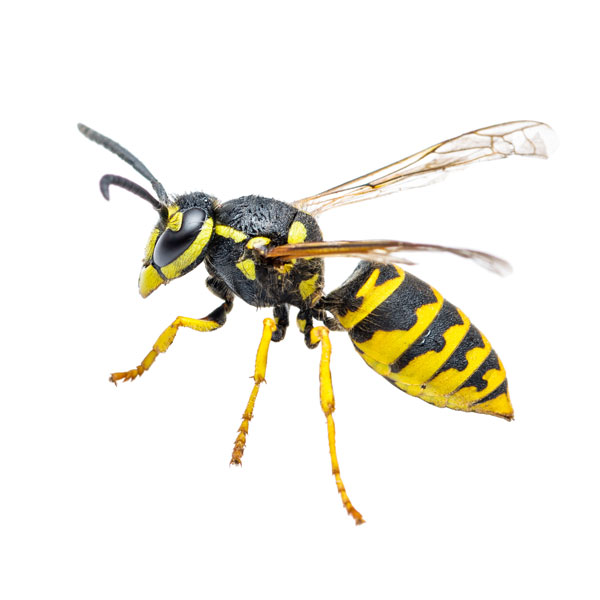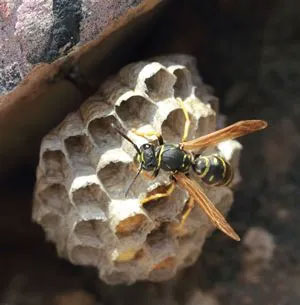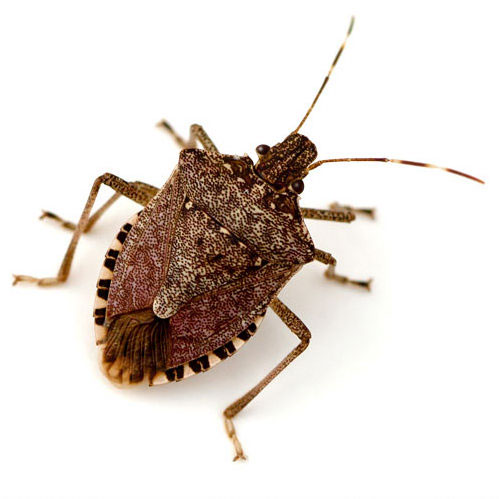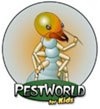Services
Residential Services
We understand your concerns when it comes to protecting your home and family from invasive pest.
Your peace of mind is our goal. Instead of a cleverly named one size fits all program, let us offer you the right solution to your pest problem.
Immediate problem-immediate solution:
No matter if your needs are to correct a current pest problem or an inclusive preventative-maintenance of nearly any pest year long. Call us for a free estimate.
Commercial Services
There is no business like your business.
Having spent many years providing pest management for all kinds of businesses, Pest Management Solutions is prepared to take on just about any challenge. Finding pests in your business may be more than just a nuisance, it could be financially devastating. Whether it be the master kitchen, break room, factory floor, office space, or especially your customer areas, pests cannot be tolerated. While each of these settings has its own potential for a pest problem, we can design a program to fit your unique business and its surroundings.
Green/Natural Services
At Pest Management Solutions we were “green” before green was cool. We have always weighed the safety of your family, pets, home, business, and environment to find the best solution to your pest problem.
When considering green approaches, what you need to understand first is that risk = toxicity x exposure.
For example, if the pesticide is very poisonous, but no people are exposed, there is no risk. Likewise, if there is plenty of exposure but the chemical is non-toxic, there is no risk.
Wasp/Hornet/Bees
 Paper wasps, hornets, and yellow jackets can be potential health threats. Allergic reactions to their venom can be painful and sometimes severe. Certain species can be more unpredictable or aggressive than others and their nests should be removed with great care.
Paper wasps, hornets, and yellow jackets can be potential health threats. Allergic reactions to their venom can be painful and sometimes severe. Certain species can be more unpredictable or aggressive than others and their nests should be removed with great care.
To meet your needs, we offer different solutions to stop and prevent their nest and attacks:
- If you have a single nest on your home we have a one-time treatment to kill, remove, and we will guarantee its elimination.

- For season long control for your entire home we have a preventative treatment we warrantee for the whole year.
- If you have need for other pest control help, we include bee service with most programs at no additional charge.
Boxelder
 Boxelder bugs are considered fall pests but it’s in the spring when the adults lay their eggs, and as they hatch the immature nymphs appear bright red. They feed on sap and seeds from Boxelder and Maple trees. Boxelder Bugs often go unnoticed until fall when they appear on homes in great numbers looking for a place to enter for the winter. Gaps in siding, soffits, vents, and peaks are particularly vulnerable. These bugs will not bite, nor will they infest any household articles, or cause damage, other than possibly leaving stains of excrement – this insect is only a nuisance. Over the winter they will not multiply, but they may wake up in reaction to heating systems or direct sunlight.
Boxelder bugs are considered fall pests but it’s in the spring when the adults lay their eggs, and as they hatch the immature nymphs appear bright red. They feed on sap and seeds from Boxelder and Maple trees. Boxelder Bugs often go unnoticed until fall when they appear on homes in great numbers looking for a place to enter for the winter. Gaps in siding, soffits, vents, and peaks are particularly vulnerable. These bugs will not bite, nor will they infest any household articles, or cause damage, other than possibly leaving stains of excrement – this insect is only a nuisance. Over the winter they will not multiply, but they may wake up in reaction to heating systems or direct sunlight.
Mosquito
 With the increased awareness of West Nile virus and other mosquito-borne diseases, the demand for control of mosquitoes has increased. The most effective control of these insects and the diseases they can carry is through a comprehensive, integrated mosquito control program.
With the increased awareness of West Nile virus and other mosquito-borne diseases, the demand for control of mosquitoes has increased. The most effective control of these insects and the diseases they can carry is through a comprehensive, integrated mosquito control program.
We offer single treatments for events like weddings and picnics, or seasonal treatments designed for continuous control. We give honest evaluations with honest expectations – we know that we cannot keep 100% of mosquitoes from your yard. But reducing standing water, removing excess yard waste, and keeping gutters clean, are just a few things we will recommend combined with treatment for the best achievable results.
Brown Marmorated Stink Bugs
 Brown marmorated stink bugs, scientifically known as Halyomorpha halys, are an invasive species of stink bug that has garnered significant attention and concern in recent years. Originally native to East Asia, these insects have spread to various parts of North America, Europe, and other regions around the world. Brown marmorated stink bugs are named after their characteristic brown, mottled appearance and the foul odor they emit when threatened or crushed.
Brown marmorated stink bugs, scientifically known as Halyomorpha halys, are an invasive species of stink bug that has garnered significant attention and concern in recent years. Originally native to East Asia, these insects have spread to various parts of North America, Europe, and other regions around the world. Brown marmorated stink bugs are named after their characteristic brown, mottled appearance and the foul odor they emit when threatened or crushed.
These stink bugs are medium-sized insects, measuring about 1.5 centimeters in length. They have a distinctive shield-shaped body with a brownish-gray coloration, marked by lighter bands on the antennae and legs. When at rest, they often tuck their legs underneath their bodies, resembling a compact shield.
One of the main reasons brown marmorated stink bugs have gained attention is their significant impact on agriculture. They are highly polyphagous, meaning they feed on a wide range of plants, including fruits, vegetables, and ornamental crops. These stink bugs use their piercing mouthparts to extract plant sap, causing damage to leaves, stems, and fruit. Infestations can lead to reduced crop yield, cosmetic damage, and even complete crop loss in severe cases.
Furthermore, brown marmorated stink bugs have a strong dispersal capability, aided by their ability to hitchhike on various modes of transportation. They can easily infest homes and buildings, seeking shelter during the colder months. Once inside, they can become a nuisance, releasing their characteristic odor and staining surfaces when disturbed.
The foul odor emitted by brown marmorated stink bugs serves as a defensive mechanism against predators. When threatened, they release a noxious chemical that deters potential predators and makes them unpalatable. While the odor may be unpleasant to humans, it poses no significant health risks.
Efforts to manage and control brown marmorated stink bugs have been challenging due to their reproductive capacity and adaptability. They have multiple generations per year, and their eggs are laid in clusters on the undersides of leaves. Integrated pest management strategies, including the use of insecticides, pheromone traps, and biological control agents, are being employed to minimize their impact on agriculture.
Research is ongoing to better understand the behavior and ecology of brown marmorated stink bugs, as well as to develop sustainable and effective control measures. Additionally, public awareness campaigns are being conducted to educate homeowners, farmers, and gardeners about the identification, prevention, and management of these invasive pests.
In conclusion, brown marmorated stink bugs are invasive insects with a significant impact on agriculture and a nuisance factor in residential areas. Their feeding habits, dispersal capabilities, and defensive mechanisms make them a challenging pest to manage. Ongoing research and integrated pest management approaches are crucial in mitigating the economic and ecological damage caused by these stink bugs.
Asian Lady Beetles
 Asian lady beetles, scientifically known as Harmonia axyridis, are a species of beetle that belongs to the family Coccinellidae. Originally from Asia, these insects have gained widespread attention and recognition in recent years due to their distinctive appearance and ecological impact. Asian lady beetles are often referred to as “ladybugs” or “ladybirds” in many regions of the world, although they are not true bugs.
Asian lady beetles, scientifically known as Harmonia axyridis, are a species of beetle that belongs to the family Coccinellidae. Originally from Asia, these insects have gained widespread attention and recognition in recent years due to their distinctive appearance and ecological impact. Asian lady beetles are often referred to as “ladybugs” or “ladybirds” in many regions of the world, although they are not true bugs.
These beetles are small in size, typically measuring between 5 and 8 millimeters in length. They are characterized by their oval-shaped bodies,which can vary in color from yellow to orange to red. One of the key identifying features of Asian lady beetles is the presence of black spots on their wing covers, although some individuals may have fewer or no spots at all. Additionally, they possess a unique marking on the thorax, which resembles the letter “M” or “W” depending on the perspective.
Asian lady beetles are known for their voracious appetite, particularly for aphids and other soft-bodied insects. This predatory behavior makes them valuable allies in the field of agriculture, as they help control pest populations and contribute to natural pest management. Farmers often encourage the presence of these beetles in their fields as a natural alternative to chemical pesticides.
However, Asian lady beetles also have some negative aspects associated with their presence. In certain regions, they have been known to invade homes and buildings, especially during the autumn season, seeking shelter for the winter. When disturbed or threatened, these beetles can release a yellowish fluid from their leg joints, which has a strong odor and can stain surfaces. This defensive mechanism is believed to deter predators.
Furthermore, Asian lady beetles have been associated with allergic reactions in some individuals. When these beetles come into contact with human skin, they can secrete a substance that may cause skin irritation or allergies. It is recommended to handle them with care or avoid direct contact if sensitive to such reactions.
In recent years, concerns have also been raised about the potential impact of Asian lady beetles on native ladybug species. The aggressive nature of Asian lady beetles, combined with their adaptability and ability to outcompete native species, has led to some ecological imbalances in certain areas. As a result, efforts are being made to study and understand the interactions between these beetles and their native counterparts.
Overall, Asian lady beetles are fascinating creatures that play a significant role in both agricultural ecosystems and urban environments. Their striking appearance and ecological impact make them subjects of interest for researchers and enthusiasts alike. Understanding their behavior, ecological interactions, and potential impacts is crucial for effective pest management and maintaining ecological balance.






 Milwaukee, Waukesha, Ozaukee, and Washington Counties
Milwaukee, Waukesha, Ozaukee, and Washington Counties